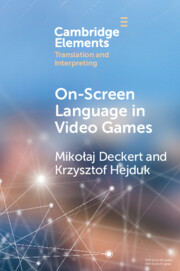Element contents
On-Screen Language in Video Games
Published online by Cambridge University Press: 27 October 2022
Summary
Keywords
- Type
- Element
- Information
- Online ISBN: 9781009042321Publisher: Cambridge University PressPrint publication: 24 November 2022
References
- 5
- Cited by



